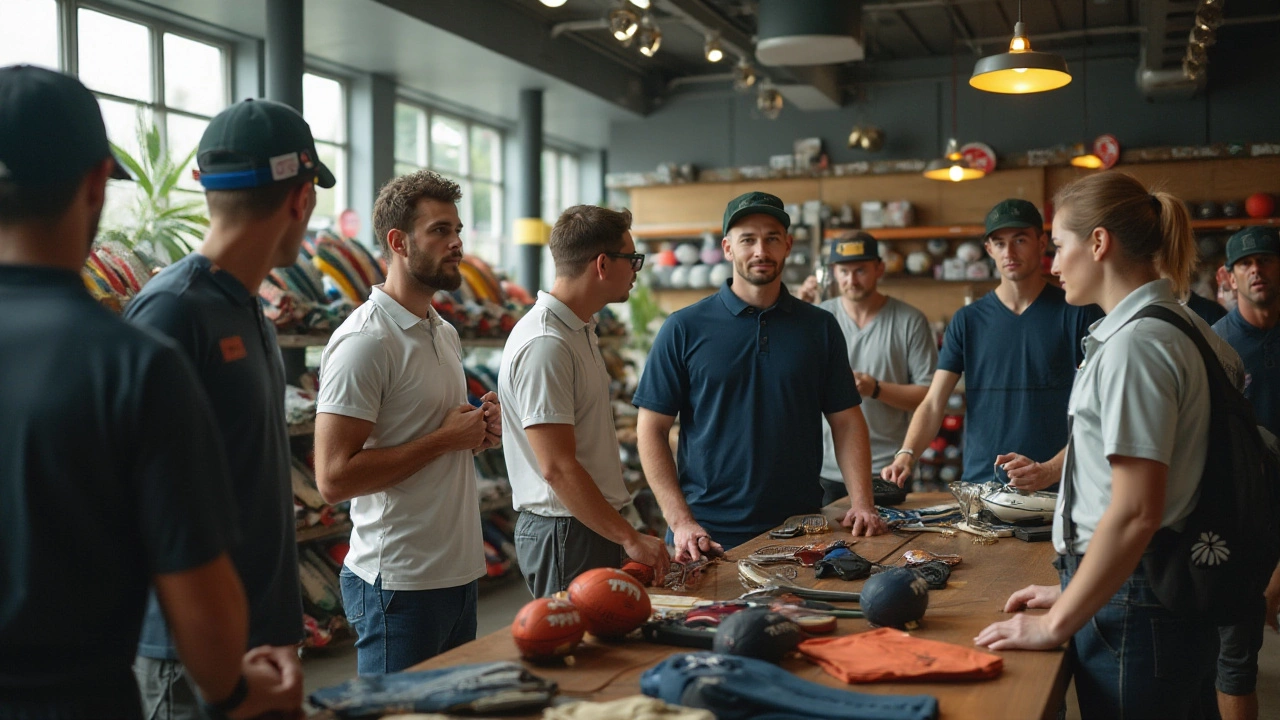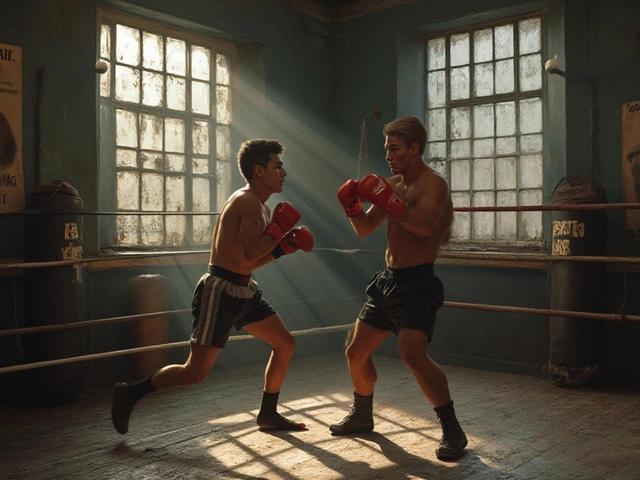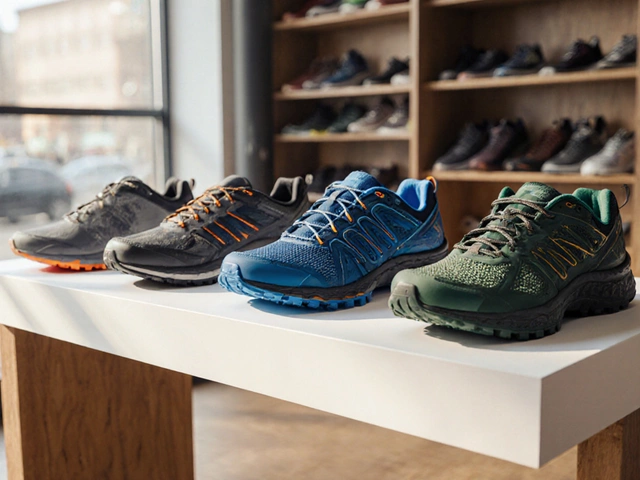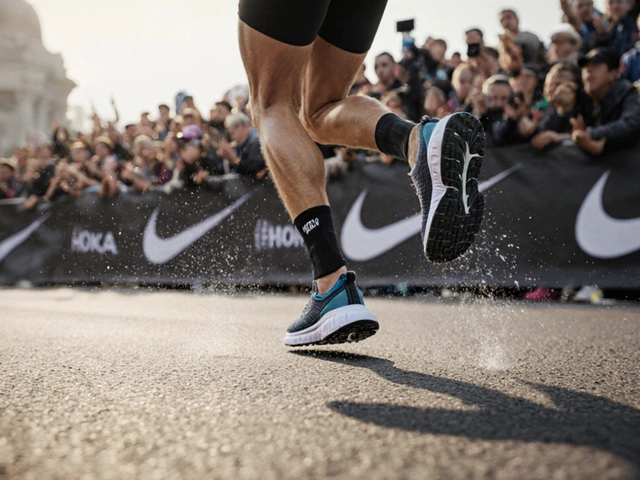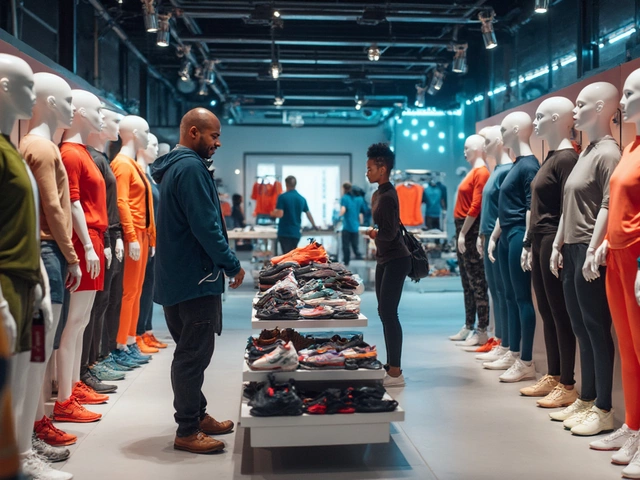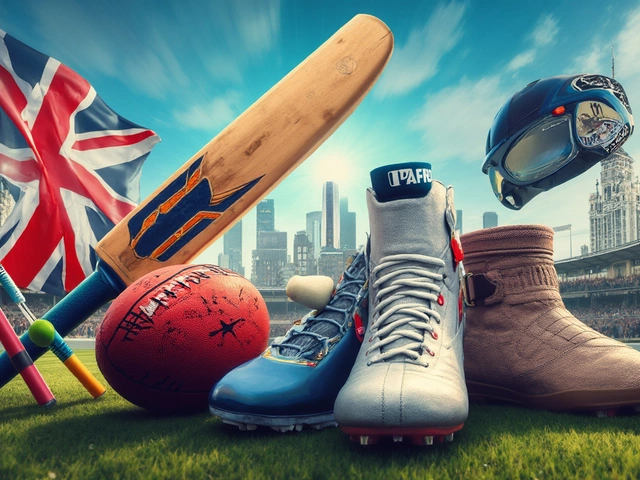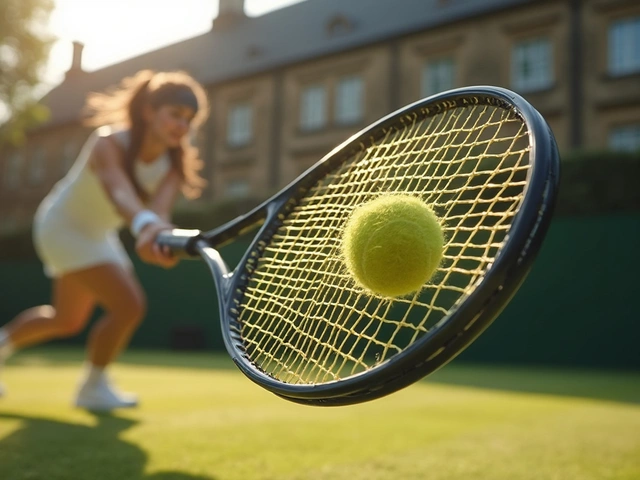Diving into the world of sports involves more than just passion and talent; it requires the right gear to ensure both performance and safety. Whether you're a newbie deciding on your first pair of running shoes or a seasoned athlete exploring the latest in tech gear, the choices can be overwhelming. You’ll find that understanding the purpose and function of each piece of equipment is crucial.
Every sport comes with its own set of equipment that is designed to enhance the experience and prevent injuries. From the helmets in football to rackets in tennis, selecting the right gear is paramount. Materials and technology are advancing rapidly, offering more options with varied benefits. Knowing what you need and why you need it can make all the difference in your performance and enjoyment in sport.
- The Importance of Choosing the Right Gear
- Different Types of Sports Equipment
- Essential Equipment for Various Sports
- Material and Quality Considerations
- Safety Tips and Maintenance
- Buying Tips for Beginners
The Importance of Choosing the Right Gear
Choosing the right sports equipment can often mean the difference between success and failure in any athletic endeavor. Whether you're an amateur or a pro, using the correct gear significantly impacts performance and safety. Imagine a pair of running shoes that don't quite fit; each step can result in discomfort, leading to possible injuries or subpar performance. On the other hand, the right fit offers comfort and can enhance your natural abilities, making every run more efficient. This specificity applies to all sports, whether it's a racquet that feels like an extension of your arm or a helmet that offers the perfect combination of safety and comfort.
The importance of selecting appropriate athletic gear, goes beyond physical performance. It affects your mental game. Knowing you're equipped with the best possible gear can boost confidence, allowing you to focus entirely on your strategy and execution. Imagine stepping onto the court or field armed not just with skill but with equipment that is steadfast under pressure. The psychological edge this provides shouldn't be underestimated. Proper equipment alleviates one more layer of worry, enabling athletes to zero in on their objectives with clarity and determination.
Moreover, the right sports essentials enhance safety, which is non-negotiable in any sport. Whether we're talking about a cyclist's helmet or shin guards for a soccer player, every piece of equipment has a designated protective role. Safety gear is designed to reduce the risk of injury, safeguarding against both common and rare accidents in the sporting arena. Ignoring the importance of quality and fit could spell trouble; hence, it's critical to prioritize gear safety highly. According to the U.S. Consumer Product Safety Commission, thousands of sport-related injuries occur every year that might have been prevented with proper equipment.
Interestingly, many professional athletes have shared insights into what makes their gear essential to their success.
"The right gear doesn't just make you better, it makes you feel invincible," explained Serena Williams during an interview. Feeling unrestricted in gear that complements your style can dramatically alter your performance. This goes to show that elite athletes place significant importance on proper equipment, not just for the physical boosts they provide, but also for the psychological reinforcement.
In today's world, the choice of sports equipment is vast, with innovations at every corner. From moisture-wicking fabrics that regulate temperature during high-intensity games to shoes designed with cutting-edge sole technology to optimize grip and motion, options are endless. This abundance, however, requires a thorough understanding of your personal needs and sporting environment. To aid in the selection process, enthusiasts can listen to user reviews, expert advice, and even technology-driven insights. As sports gear continues to advance, one must stay informed to make the best possible choices, ensuring a fulfilling, safe, and successful sporting experience.
Conclusively, the blend of safety, comfort, and performance enhancement makes choosing the right gear an integral aspect of enjoying sports. A small oversight, like an unsuitable pair of gloves or a wrongly sized protective pad, can amplify risks and reduce the enjoyment of the game. Start with the basics, thoroughly understand your requirements, and remember: your gear is your trusted partner in every game, practice, and tournament. Choose wisely, enhance your potential, and immerse yourself fully in the sport you love.
Different Types of Sports Equipment
When you start exploring the realm of sports equipment, you quickly realize the vast array of gear available, each designed with a specific purpose in mind. Whether you're a budding athlete or a casual player, understanding this equipment is crucial. From protective gear like helmets and pads to equipment that enhances performance like rackets or running shoes, each piece is a part of the intricate puzzle that makes sports both safe and enjoyable. For example, in sports like ice hockey and American football, protective gear not only prevents injuries but also allows players to push their limits. On the other hand, equipment such as balls in soccer or basketballs in basketball are essential for the very definition of the sport itself. Mischoosing equipment can often lead to not only discomfort but also potential risk of injury. Knowing the ins and outs of your gear can often be the deciding factor between a good and bad experience.
Have you ever noticed how specialized each piece of equipment can be, right down to the materials used? Modern-day tennis rackets, for example, utilize strong yet lightweight materials like carbon fiber, designed for improved swing speed and precision. As technology evolves, so too does the equipment, all aimed at enhancing performance and safety. In swimming, the evolution of swimwear from regular fabric to hydrophobic, low-drag materials has broken records time and again. The detail in construction of each item, like the exact curvature of a bicycle helmet for aerodynamics, highlights the blend of science and creativity in sports gear design. Even in team-based disciplines such as cricket, where the ball and bat must adhere to strict guidelines, innovations continue to emerge.
Different sports not only require different equipment, but they also demand a unique approach in selecting what's right for each individual. In skiing, choosing between skis suitable for alpine racing as opposed to freestyle skiing could drastically affect your abilities on the slopes. This diversity in selection makes it important for athletes to have a deep understanding of what they need, often guided by their personal style and level of engagement. As a renowned sports scientist once said,
"The perfect synergy between an athlete and their equipment can often be the catalyst for greatness."This demonstrates the importance of carefully choosing the appropriate athletic gear and why investing in quality items matters greatly. The profundity and specificity required in these decisions often make it a worthwhile endeavor to seek expert advice or use trusted brands.
Sometimes, it's easy to overlook the smaller, yet significant accessories that make a vast impact. Consider a seemingly simple item such as a water bottle—it’s essential across all sports but varies widely in terms of material and functionality. What may seem trivial can actually affect your performance by either keeping you sufficiently hydrated with ease or, on the contrary, becoming a cumbersome addition. Modern advancements have birthed smart bottles that track your hydration levels, promoting optimal performance and recovery. It's these continual developments that maintain the dynamic atmosphere within the world of sports equipment. As you continue on your sports journey, embracing the subtleties of equipment choices can build a strong foundation for improvement and enjoyment.
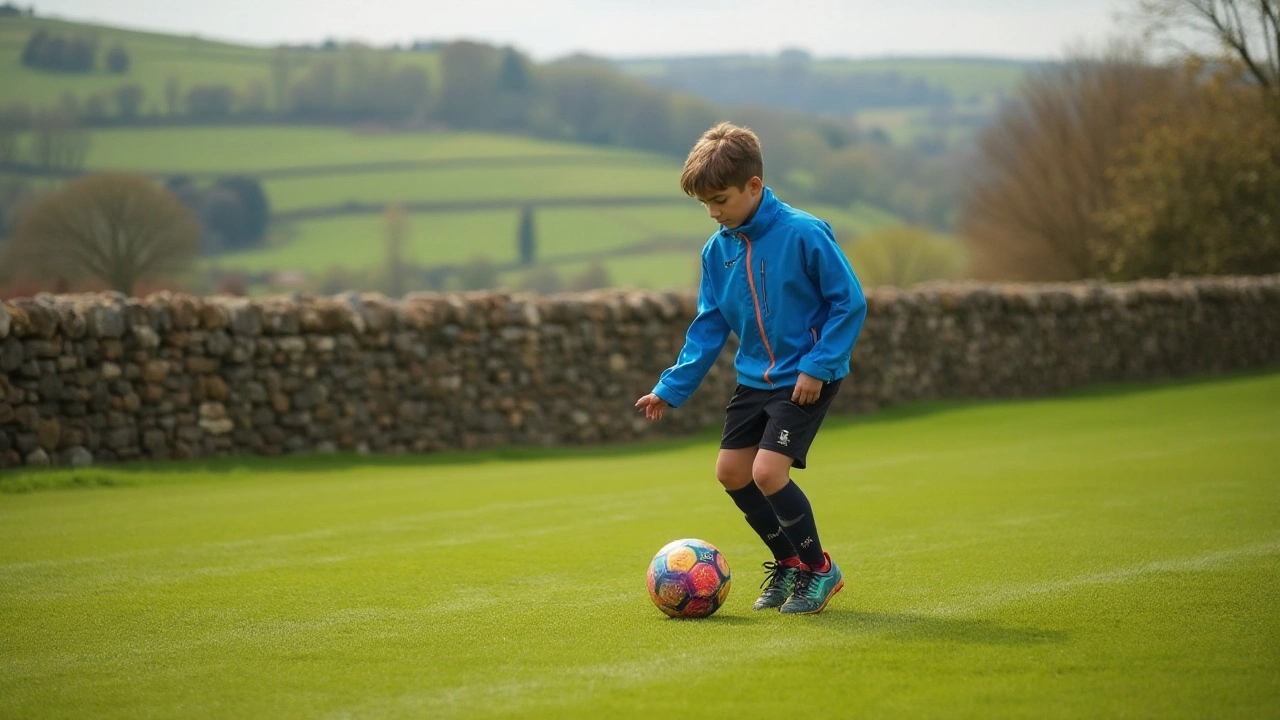
Essential Equipment for Various Sports
When stepping into any new sport, understanding the basic essentials required is key to both safety and enjoyment. Different sports demand specialized gear that not only aids in improving performance but also offers protection against potential injuries. Let's take a closer look at what specific equipment is required across various popular sports, starting with the universally known football. This contact sport, known for its intensity, requires gear like helmets, shoulder pads, and cleats. Helmets are crucial for protecting the head from concussions and severe injuries, while shoulder pads shield key areas of the upper body. Cleats offer traction on the playing field, reducing the risk of falls and sprains.
Next, consider basketball, which seems deceptively simple but requires its own set of gear. While the basketball itself is the centerpiece, players need quality shoes designed for fast-paced play and agile movements. These shoes support the ankles and provide grip, preventing slips on the court. Flat surfaces in basketball shoes can mitigate impact stress, contributing to injury prevention. Recreation centers often require players to use mouthguards to add another layer of protection, safeguarding against unexpected falls or impacts.
Moving onto tennis, this racket sport emphasizes the importance of having the right kind of shoes and a well-matched racket. Tennis shoes are specifically designed with lateral support to handle the constant side-to-side movements typical in the game. The racket choice can significantly influence a player's control and power, which is why considerations around string tension, grip size, and racket weight are essential. A suitable grip size enhances comfort, enabling better control and precision. In fact, when asked about choosing the right gear, renowned player Serena Williams once said, "Your racket should be an extension of your arm."
In the realm of swimming, simplicity is the essence. A good quality swimsuit, goggles, and swim cap are the primary essentials. These items reduce drag and improve speed while ensuring that swimmers maintain comfort and sight in the water. Goggles are particularly crucial as they allow swimmers to see clearly underwater, which is essential for maintaining proper form and avoiding collisions. Swim caps offer a streamlined surface over the head, not only preventing the hair from falling over the face but also aiding in reducing drag, thereby optimizing speed.
Lastly, the adventurous world of cycling demands attention to detail with its equipment. Helmets remain absolutely non-negotiable to protect against head injuries. Depending on the cycling type, be it mountain biking or road cycling, the gear has subtle differences. Mountain bikes are durable and have thick, knobby tires for rough terrains, whereas road bikes are lighter with thinner tires designed for speed. Padded shorts and a comfortable saddle also come highly recommended, as they mitigate any discomfort during long rides. Cycling gloves with padded palms prevent blisters and enhance grip, vital for any serious cyclist aiming to have the best riding experience possible.
These essentials are more than just accessories; they are designed with the athlete's needs and safety in mind. This emphasis on the right sports equipment not only enhances performance but also ensures that athletes can enjoy their sport to the fullest, without the concern of unnecessary injuries.
Material and Quality Considerations
When it comes to choosing sports equipment, understanding the material and quality is as significant as the fit itself. The market today is flooded with countless options, each boasting different material compositions from synthetic fabrics to high-grade metals. For beginnings, the choice can be daunting, as each material offers distinct benefits and trade-offs. A better grasp of material science ensures you not only get durable gear but also enhance your performance.
Take, for example, running shoes, which have seen remarkable innovation in their materials. Lightweight meshes are engineered to maximize breathability while synthetic soles provide the robustness and cushioning runners demand. A crucial aspect is to focus on shoes which balance cushioning and stability, with exceptional grip to prevent slips. Another perspective is in racket sports, where materials such as graphite are favored for providing the lightness and precision players crave. Keeping all these facets in mind, one must discern their individual needs and match them against the qualities of the materials available.
Notably, equipment quality often hinges on the brand reputation. Yet this isn't always synonymous with higher prices. In many cases, smaller, less-known brands offer substantial value with comparable performance at a lower cost. A wise move is to read reviews from other athletes and experts. As Alastair Dryer, a respected sports analyst, observes, "The key is in realizing that what works for one may not work for another, and it's crucial to try different options before settling."
| Material | Common Use | Benefits |
|---|---|---|
| Graphite | Rackets | Lightweight and strong |
| Synthetics | Shoes, clothing | Durable, breathable |
| Leather | Gloves, balls | Natural feel and control |
Lastly, let us not forget that maintaining your sports equipment is essential in ensuring longevity and maintaining quality. Regular cleaning and storage in the appropriate environment can prolong the life of your gear significantly. Different materials require different care approaches. For example, leather should be conditioned regularly to prevent cracking, while synthetic fabrics benefit from air drying to avoid shrinkage. Having the right maintenance routine will save costs in the long run, ensuring your sports gear remains timeless.

Safety Tips and Maintenance
Maintaining sports equipment goes beyond mere aesthetics or prolonging the life of your gear; it’s also intrinsically linked to safety. Improperly maintained or damaged equipment can lead to injuries, which is something every athlete, hobbyist or professional, aims to avoid. Take, for instance, bicycle helmets. A helmet with cracks or dents might not provide the necessary protection in case of a fall. Hence, regular inspections and proper storage play a vital role in ensuring your safety when engaging in your favorite sports activities.
One key safety tip is to regularly check for wear and tear. Whether it’s the laces on a soccer ball or the straps on a ski boot, any faulty equipment can lead to potential accidents. It's advisable to perform visual and tactile inspections, such as running your fingers over surfaces to detect frayed materials or loose screws. Also, don’t overestimate durability; replacing parts when they show signs of damage rather than waiting for them to break is always a safer bet. As sports technology advances, newer materials and designs might also require specific maintenance tasks that older models didn’t need.
"Keeping your sports gear in top condition is like maintaining a car. Regular checks, prompt replacements, and a keen eye can prevent major setbacks," advises Dr. Erin Campbell, an expert in sports safety engineering.
Moreover, appropriate cleaning methods tailored for each piece of equipment can keep germs at bay and ensure its longevity. Gear such as helmets, gloves, and elbow pads often come into contact with sweat and dirt that can harbor bacteria. Using mild soap solutions and letting them air dry will help eliminate unwanted microbes. You might want to avoid harsh chemical cleaners as they can degrade the material over time. Establishing a routine cleaning schedule after use can become an integral part of your sporting routine.
Tuning and Adjustments
Regular tuning and adjustments can significantly impact the performance and safety of your athletic gear. For example, a tennis racket's strings may lose tension over time, altering the player's control over the ball. Tuning ensures that equipment functions at its best; consulting experts or specialists for tuning advice specific to your activity is wise. Some equipment, like golf clubs or bike gears, may require specialized tools for adjustments. Knowing how to perform basic maintenance can be beneficial, as you might need quick fixes during practice or away games. Learning these adjustment skills can empower athletes by eliminating downtime and maximizing efficiency.
- Inspect equipment before and after each use.
- Replace worn parts promptly.
- Clean gear with mild solutions only.
- Seek expert advice for tuning and adjustments.
- Practice basic maintenance tasks yourself.
Taking proactive steps in maintaining and ensuring the safety of your sports gear not just guards against injuries but also enhances the experience, making every game or workout both enjoyable and more rewarding. Being mindful of how you care for your equipment can serve as an extra layer of security and satisfaction in your sporting life.
Buying Tips for Beginners
Entering the realm of sports can be both exciting and daunting for beginners. The plethora of choices in the marketplace can easily overwhelm anyone who is not well-versed in the intricacies of sports equipment. To make a confident purchase, one must start by understanding the basic necessities. When starting, it's tempting to get the fanciest gear, but remember: the most crucial factor is comfort. With any athletic gear, you're looking for items that fit well and support your movement. Whether you’re purchasing athletic shoes, helmets, or rackets, comfort should be your top priority. Most beginners overlook this point and suffer during their activities.
Budgeting is another vital consideration. As enticing as the latest models and advanced technology might be, they often come with a hefty price tag. It's wise to establish a budget and look for athletic gear that meets your needs without breaking the bank. There are plenty of mid-range alternatives that offer great functionality and durability. Shopping at end-of-season sales is a savvy way to get high-quality products at a fraction of their usual cost. Newcomers to sports should also consider investing in second-hand equipment, particularly if they’re still testing the waters of their chosen sport.
Consulting with knowledgeable sources can also go a long way in ensuring you make the right purchase. Many sporting goods stores have staff who actively participate in sports themselves, making them perfect allies in your quest. To gather varied opinions, don't hesitate to leverage online platforms and communities that are dedicated to specific sports. Asking for advice from family, friends, or online forums that cater to enthusiasts in your sport can provide insight that online reviews might miss.
Trying before buying is crucial. Many stores offer trial periods for equipment such as tennis rackets, golf clubs, and even bicycles. This experience will help you identify what suits your needs and preferences. You're not just paying for gear but for an experience that will enrich your sporting journey. Therefore, hands-on knowledge is invaluable. Consider rental options where you might be able to test various pieces of equipment before committing to purchase. This can save you from buyer's remorse and help cement your decision when selecting the right gear.
Careful consideration of the product’s features is also recommended. Examine whether certain features are must-haves or merely bells and whistles. Think about how often you will realistically use a particular piece of sports equipment. Investing in smart features might be necessary if you plan on being a regular participant. Still, beginners often benefit more from simplicity and reliability. You'll often find that basic models are more than sufficient for newcomers, offering all the features needed to cultivate skills without causing confusion or frustration.
“Investing in quality equipment improves not just your performance, but your safety and enjoyment too.” - Sports Equipment Journal, 2023
A final tip is to keep an eye on reviews for product reliability and durability. Understanding the shelf-life and maintenance needs of sports gear will ensure that it serves you well over time. Never underestimate the value of durable construction and materials, as they directly influence how long your purchase will last. With these guidelines in mind, stepping into the sporting world feels less like a leap into the unknown, and more like joining a vibrant community focused on passion and performance.
